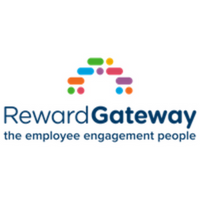Understanding what benefits really matter to your workforce

For if I’ve learned anything over the years, it’s that the best way to understand what really matters to my workforce is to ask them. I know it’s extra work, and I know that it may be challenging, but I can tell you that it’s well worth the time and effort.
Why? Here are two key reasons:
1) More data
The best way to have a true picture of a situation is to get as much data as possible, and talking to your employees gives you a truck or boat load of data. They may even surprise you, and give you ideas that you’d never considered or thought of.
2) Buy-in
The best way to get buy-in is to make your workforce a part of the process, a part of the decision. That way they’ll back and support you, knowing that they’ve helped develop the solution and their benefits.
So how can you do this, how can you get this important input from your workforce? Two of the most common, and from what I’ve found the most effective, ways to do this are using employee surveys and employee focus groups. Here are some tips to help you with both.
1) Employee surveys
Surveys, especially quick pulse surveys, are useful and easy ways to get input from your workforce. The key is to craft them well, making them easy to complete for employees and easy to action for you and your team. Keep your questions short and to the point, focusing questions on what you need to know, and leaving out anything that would be nice to know.
Try out your questions with a random group of employees, and make sure they are easy to understand and easy to answer, and test out the results before sending out to also make sure that the results will give you exactly what you need to make your key decisions.
2) Employee focus groups
Focus groups can take a bit more time to do, but I’ve found them well worth both the time and the effort. They give you another dimension to your data, bringing the data to life through robust and insightful two-way conversations with your workforce.
The key is to be prepared, having a structured outline and approach developed before going into these sessions. This will help you keep the focus as conversations go astray, and help you leave with the information you want and you need. As with surveys, try out your questions and your approach beforehand, and you’ll have a better chance of succeeding.
Both of these approaches will help you understand and guide you in developing benefits that matter to your workforce. And the added benefit is that by opening up these lines of communication with your workforce, doing so in an open and honest way, you’re sending a strong message to your employees. You’re telling them you truly care about them, about what they think and about what they want, and that you trust them.
Again, I’m not a mind reader, but if I was, I’d be thinking that these are results that you and your business leaders would be thrilled to have at your company.
Debra Corey is group reward director at Reward Gateway.
This article was provided by Reward Gateway.
In partnership with Reward Gateway
We help the world's leading companies with an employee engagement platform.







